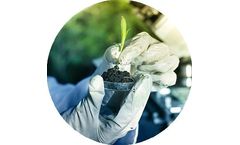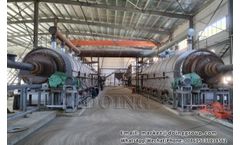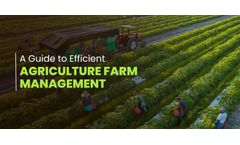Crop Input Production Articles & Analysis: Older
539 articles found
Executive Summary The global agrochemicals market is poised for significant growth in 2024, driven by increasing food demand due to population growth and the rising consumption of healthier diets. The market is segmented into fertilizers, pesticides, adjuvants, and plant growth regulators, with key applications in crop-based and non-crop-based sectors. Market Overview Market Size for 2024: The ...
Plant hormones, also known as phytohormones, are trace organic compounds synthesized within plants that play a crucial role in regulating various aspects of growth and development. These hormones are produced in specific tissues and can be transported to different parts of the plant, where they exert their effects at remarkably low concentrations. Their influence spans a wide array of processes, ...
Liposomes are structural entities composed of a lipid bilayer surrounding an aqueous solution. Their distinctive characteristics have led to numerous applications in diverse scientific and technological domains. In the realm of agricultural chemicals, liposomes can be utilized to augment the effectiveness of pesticides and facilitate the delivery of essential nutrients. Several studies have shown ...
Biochar is a carbon-rich material produced through the pyrolysis of organic biomass under low oxygen conditions. Common feedstocks include agricultural waste, forestry residues, and even municipal organic waste. Its porous structure and chemical properties make it highly effective for soil improvement and environmental benefits. Agricultural practices in developing countries often face hurdles ...
In today’s highly regulated industries like food and beverage storage and agriculture, maintaining optimal humidity control is critical to ensuring product quality, extending shelf life, and maximizing operational efficiency. The Industrial Applications of Membrane Humidifier – Food and Beverage Storage, Agriculture and Vertical Farming Industry rely heavily on precise humidification ...
Field Irrigation Systems are essential in agriculture since they help provide water to plants where rain may be erratic or unavailable. Given the ever-rising population around the globe, food production is on the rise, and thus, there is a need to maximize agricultural production. Therefore, contemporary field irrigation systems have developed as an all-important tool to facilitate crop growth, ...
The irrigation process in agriculture, landscaping, and water management is crucial in its work with climate change-altered efficiency and sustainability. When the global temperature increases, so does the irregular supply of water, which directly affects irrigation systems across different parts of the globe. We pick from here and discuss further how climate change impacts irrigation and the ...
Agricultural innovation has continually driven the quest for efficient weed management strategies. Among modern herbicides, Pyroxasulfone has emerged as a formidable solution. Renowned for its effectiveness and broad-spectrum activity, Pyroxasulfone is a vital tool for contemporary agronomists and farmers. Chemical Properties of Pyroxasulfone Pyroxasulfone is classified under the isoxazoline ...
Water is undoubtedly one of the most important resources on the planet. However, we often forget its central role in an activity we all depend on: agriculture. Despite 70% of available freshwater being dedicated to this sector, climate change, growing demand, and poor management have jeopardized the availability of this resource, directly affecting global food security. Agriculture cannot exist ...
Plant growth regulators (PGR) are a class of small molecule compounds with plant hormone activity that can affect plant growth and development. Such compounds are often used to enhance plant resistance, promote plant cell division and growth, increase yield, and improve quality. There are many types of growth regulators with different properties. However, as a chemical substance, plant growth ...
In recent years, corn cob charcoal making technology has become popular. After carbonization, corn cobs are converted into a high-quality biomass carbon. This biomass carbon not only has the characteristics of high calorific value and low pollution, but also has a wide range of application prospects. And the carbonization process of corn cobs is simple and efficient. Just place the corn cobs on ...
Introduction of Pyroxasulfone Agricultural innovation has continually driven the quest for efficient weed management strategies. Among modern herbicides, Pyroxasulfone has emerged as a formidable solution. Renowned for its effectiveness and broad-spectrum activity, Pyroxasulfone is a vital tool for contemporary agronomists and farmers. Chemical Properties of Pyroxasulfone Pyroxasulfone (CAS ...
The ThirdEye project supports farmers in Mozambique and Kenya with their decision making in farm and crop management by setting up a network of flying sensors operators. Our innovation is a major transformation in farmers’ decision making regarding the application of limited resources such as water, seeds, fertilizer and labor. Instead of relying on common-sense management, farmers are now ...
Modern agriculture faces numerous challenges, such as the ever-increasing population, development of biomass-derived feedstocks for greener industries, developing in a sustainable and rapid manner, the major climate change. All of them pose a major threat to global food and energy security. Synthetic biology can provide tools to address many of these challenges and the industry is likely to be a ...
Agriculture has always been a fundamental part of human civilization, providing the food and resources necessary for survival. However, as the global population continues to rise and climate change presents new challenges, the need for efficient agriculture farm management has become increasingly critical. Implementing modern technologies and innovative practices can help optimize productivity, ...
Precision agriculture is a revolutionary approach that leverages technology to optimize farming practices. Precision agriculture systems offer a modern solution to these age-old problems, enabling farms to enhance productivity, reduce waste, and improve sustainability. ...
Charcoal production is a vital industry with diverse applications, ranging from fuel to soil enhancement. Sawdust and wood chips are two primary raw materials for making charcoal, and understanding their properties, benefits, and processing methods is crucial for optimizing production. 1. Understanding Sawdust and Wood Chips Sawdust is a byproduct of woodworking operations, consisting of fine ...
Modern agriculture faces numerous challenges, such as the ever-increasing population, development of biomass-derived feedstocks for greener industries, developing in a sustainable and rapid manner, the major climate change. All of them pose a major threat to global food and energy security. Synthetic biology can provide tools to address many of these challenges and the industry is likely to be a ...
Introduction of Cytokinin Cytokinin is an organic compound that belongs to the cytokinin family. It is widely used in plant physiology and agriculture due to its beneficial effects on plant growth and yield. Cytokinin is a potent growth hormone and is commonly used in plant tissue culture, induction of cell division and shoot proliferation, plant regeneration, and in vitro production of plant ...
Kamala Farms is a leading name in hydroponic farming in India, and faced its own set of challenges in scaling operations and managing its network of client’s farms. By adopting KhetiBuddy’s farm management solution, Kamala Farms transformed its business process and consulting practices, optimizing its processes and driving significant improvements. Kamala Farms initially struggled ...














